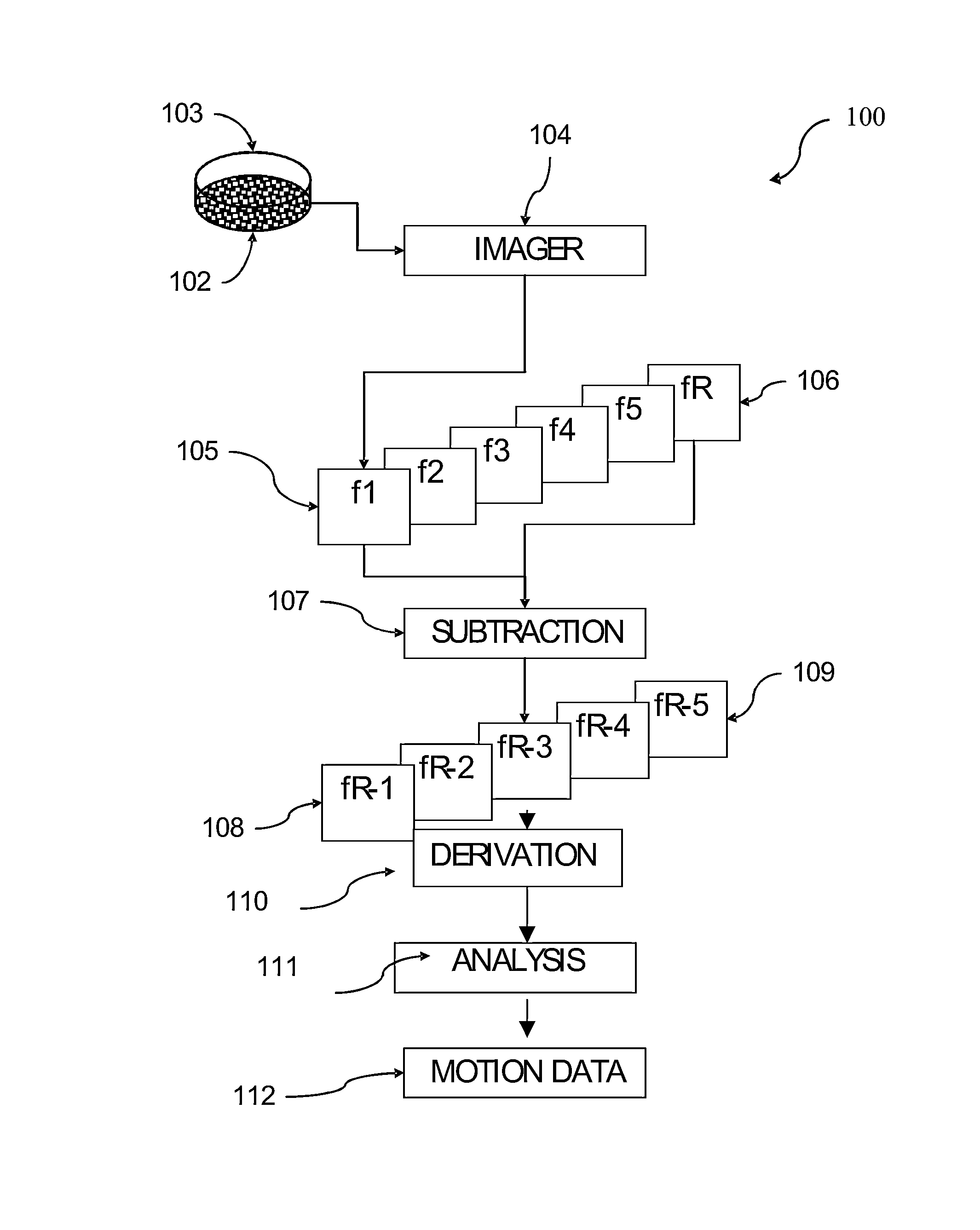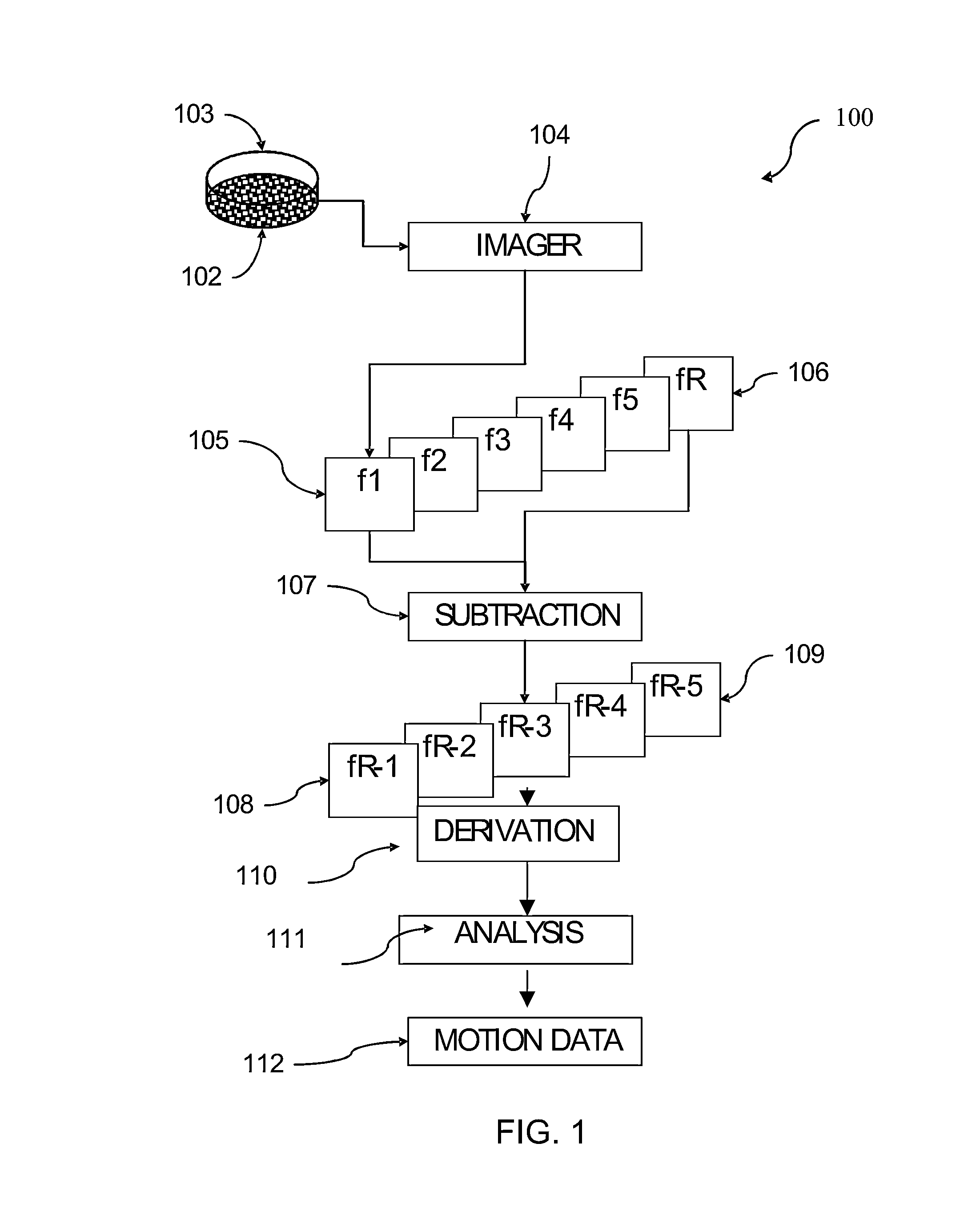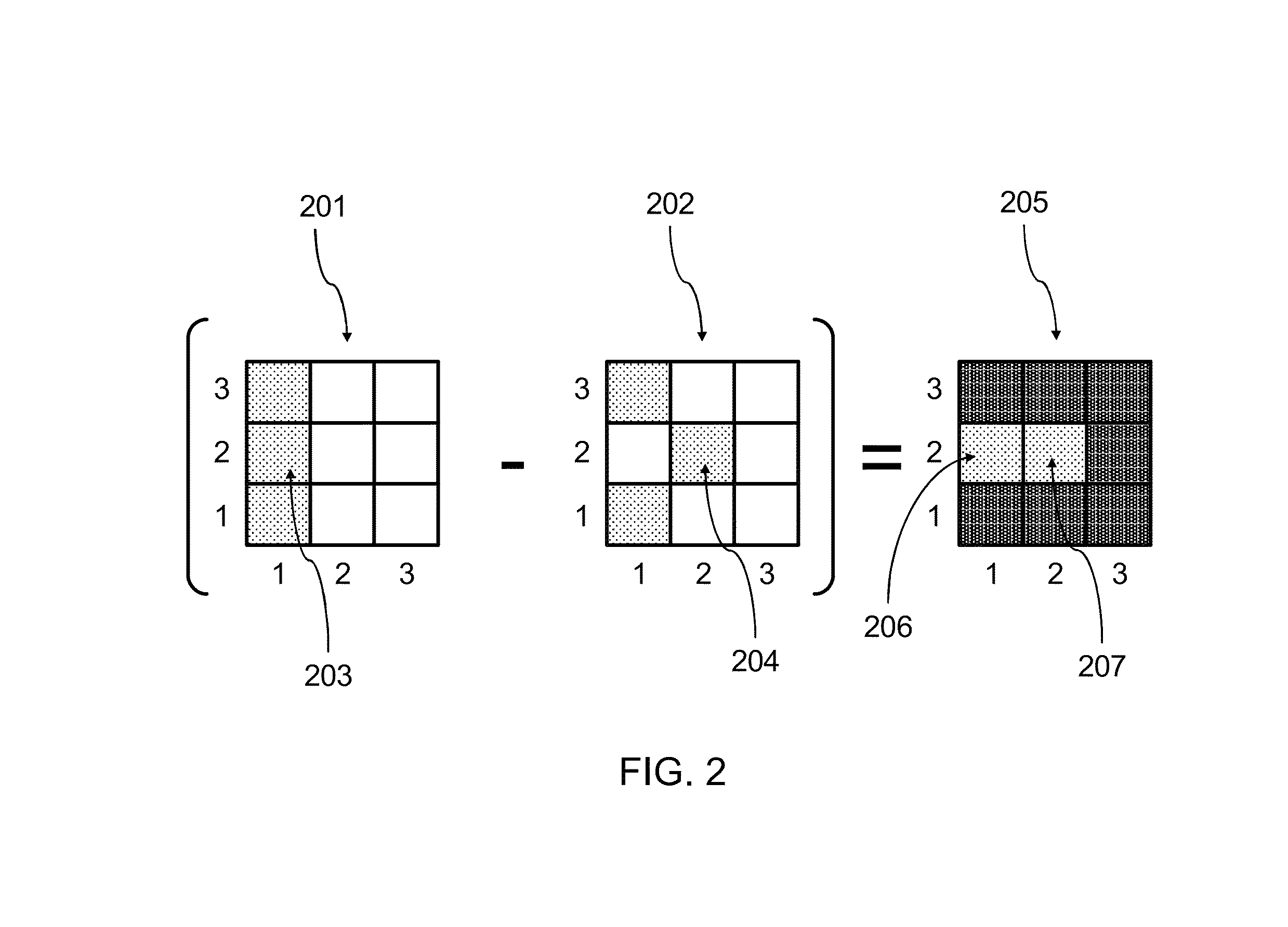System and method for determining motion of a biological object
a biological object and motion technology, applied in the field of biological object motion determination, can solve the problems of high throughput, arrhythmia and heart failure, shortening or lengthening of cardiomyocyte action potential, etc., and achieve the effect of simple and easily automated
- Summary
- Abstract
- Description
- Claims
- Application Information
AI Technical Summary
Benefits of technology
Problems solved by technology
Method used
Image
Examples
example 1
[0061]Cardiomyocyes were obtained by differentiation of the H7 human embryonic stem cell (hESC) line as described in U.S. Pat. No. 7,452,718. Undifferentiated H7 hESC cells were seeded into 24 well matrigel coated plates. After one week of growth as undifferentiated cells, the medium was changed to RPMI+B27 supplement, with 50 ng / mL Activin A and 50 ng / mL BMP-4. After four days, the growth factors were removed by medium exchange, and the cells were then cultured for an additional 14 days in RPMI+B27 alone resulting in cells expressing Nkx2.5, α-actinin and other markers of cardiac cells and which showed spontaneous beating.
[0062]A video file of spontaneously beating cardiomyocytes derived from hESC acquired at 10 frames / second was imported into Adobe ImageReady and a representative series of 114 video frames abstracted from the .wmv video file and exported to Abobe Photoshop. The resulting file contained 114 layers each comprising a single frame from the original video in ascending ...
example 2
[0066]Image frames from a second video file of spontaneously beating cardiomyocytes derived from human embryonic stem cells acquired at 10 frames / second were imported into Image J (http: / / rsbweb.nih.gov / ij / ) to give 332 time series images for analysis. Four rectangular sub-regions were defined within the imaged field and each sub-region in each of 331 time series images was processed independently using the equivalent sub-region in frame 332 as a reference for image subtraction. To measure cardiomyocyte beating frequency in the different regions mean pixel intensities for 331 subtractive images for each of the four regions were plotted against their corresponding frame number (FIG. 11). Fourier analysis performed in Microsoft Excel (FIG. 12) of data from one of the regions showed a principal frequency of 2.07 Hz for cardiomyocyte beating, equivalent to 124 beats / minute.
PUM
 Login to View More
Login to View More Abstract
Description
Claims
Application Information
 Login to View More
Login to View More - R&D
- Intellectual Property
- Life Sciences
- Materials
- Tech Scout
- Unparalleled Data Quality
- Higher Quality Content
- 60% Fewer Hallucinations
Browse by: Latest US Patents, China's latest patents, Technical Efficacy Thesaurus, Application Domain, Technology Topic, Popular Technical Reports.
© 2025 PatSnap. All rights reserved.Legal|Privacy policy|Modern Slavery Act Transparency Statement|Sitemap|About US| Contact US: help@patsnap.com



